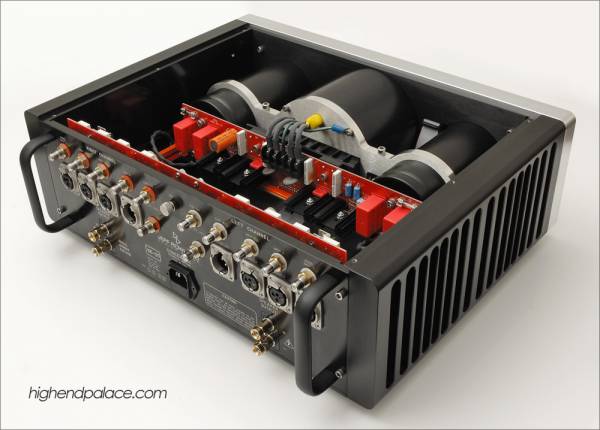Ok how about this:
American Wire Gauge table and AWG Electrical Current Load Limits with skin depth frequencies
Then make your fuse half of the wires rated capacity.
American Wire Gauge table and AWG Electrical Current Load Limits with skin depth frequencies
Then make your fuse half of the wires rated capacity.
Ok how about this:
American Wire Gauge table and AWG Electrical Current Load Limits with skin depth frequencies
Then make your fuse half of the wires rated capacity.
Valid only for wires and cables (probably from the NEC ampacity tables). Those numbers change when you have multiple conductors in a raceway, different ambient conditions, etc. They are not valid for inductor and transformer windings.
This passage from Discrete's link show a number of factors that influence fuse value selection.* Normal operating current (The current rating of a fuse is typically derated 25% for operation at 25C to avoid nuisance blowing. For example, a fuse with a current rating of 10A is not usually recommended for operation at more than 7.5A in a 25C ambient.)
* Overload current and time interval in which the fuse must open.
* Application voltage (AC or DC Voltage).
* Inrush currents, surge currents, pulses, start-up currents characteristics.
* Ambient temperature.
* Applicable standards agency required, such as UL, CSA, VDE.
* Considerations: Reduce installation cost, ease of removal, mounting type/form factor, etc.
transformers and motors require a starting current that far exceeds the normal running current.Inrush currents, surge currents, pulses, start-up currents characteristics.
This requirement overrides all other if nuisance blowing at start up is to be avoided.
Andy5's
is particularly aimed at transformers and is applicable to Audio equipment.A 225VA transformer at 115V should draw about 2A. It is usual to specify a fuse at 3 X operating current.
If a lower value fuse is required, then some form of soft start must be used.
I repeatedly advise soft start circuit and close rated fusing.
An externally hosted image should be here but it was not working when we last tested it.
A couple of things to change. Change the 7.5ohm 10 watt to a CL-80 or CL-90. And replace the electrolytic across the coil with a standard protection diode. It only needs to be active for like a half second or less. Caps are 80% charged in a half second and full charged in 2 sec, and thats if you have a 10 ohm resistor.
This is the simplest and full proof. The only hard part is selecting the relay voltage and the resistor in series with the coil. Id pick a relay coil voltage that is close to my B+, and then tune it with the resistor so that the relay on sees the needed voltage to flip. I just did this with my t-amp. I had a 28v rail, and a 24v relay, then i just put a 500 ohm resistor in series with the relay coil, and it dropped the relay voltage down to 20v, which in my case was perfect for the coil voltage.
Last edited:
Um...
A thermistor (NTC) is ran in series with the power switch as a inrush limiter on the primary side.
Unlike a 10 watt resistor, a NTC can handle the full amplifier load if the inrush limiter circuit fails. Every pc power supply has a ntc, and lot of amps use them with no bypass. So, cold the ntc is 10-100ohms, and then drop to below a half an ohm in the second it takes to heat up.
A thermistor (NTC) is ran in series with the power switch as a inrush limiter on the primary side.
Unlike a 10 watt resistor, a NTC can handle the full amplifier load if the inrush limiter circuit fails. Every pc power supply has a ntc, and lot of amps use them with no bypass. So, cold the ntc is 10-100ohms, and then drop to below a half an ohm in the second it takes to heat up.
spst. Open till engaged.
File:Relay symbols.svg - Wikipedia, the free encyclopedia
it bypasses the inrush limiter when engaged. Id run the coil from the +- rails so you equal the load. Use the highest coil voltage you can get thats slightly below your rails. So if your rails are +-25vdc, then get a 48v coil and tune it with a series resistor. So you have 50v across your 48v relay, so you put a series resistor in it to eat say, 10v, so the coil sees 40v. a 48v relay doesnt need 48v to trigger, odds are it needs less than 40v. Like i said my 24v relay worked great at 20v. And that keeps the coil heat down and lowers the current that the relay uses.
http://www.components.omron.com/components/web/PDFLIB.nsf/0/4F7D9D9CA026C97E862573930070AC4F/$file/G5LA_E_0609.pdf
G5LA-1A4-DC48
This guy want 75% of coil voltage so 36 volts.
File:Relay symbols.svg - Wikipedia, the free encyclopedia
it bypasses the inrush limiter when engaged. Id run the coil from the +- rails so you equal the load. Use the highest coil voltage you can get thats slightly below your rails. So if your rails are +-25vdc, then get a 48v coil and tune it with a series resistor. So you have 50v across your 48v relay, so you put a series resistor in it to eat say, 10v, so the coil sees 40v. a 48v relay doesnt need 48v to trigger, odds are it needs less than 40v. Like i said my 24v relay worked great at 20v. And that keeps the coil heat down and lowers the current that the relay uses.
http://www.components.omron.com/components/web/PDFLIB.nsf/0/4F7D9D9CA026C97E862573930070AC4F/$file/G5LA_E_0609.pdf
G5LA-1A4-DC48
This guy want 75% of coil voltage so 36 volts.
Last edited:
- Status
- This old topic is closed. If you want to reopen this topic, contact a moderator using the "Report Post" button.
- Home
- Amplifiers
- Chip Amps
- Need help choosing mains fuse value
